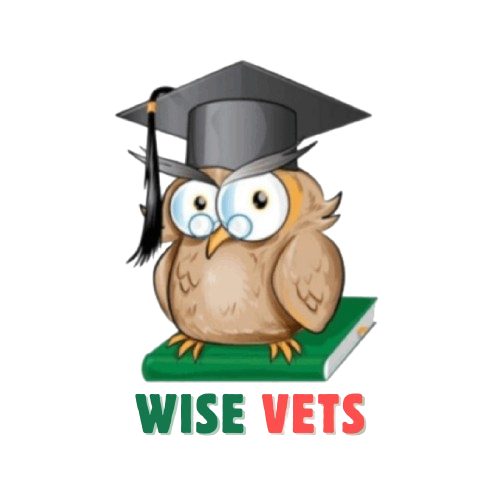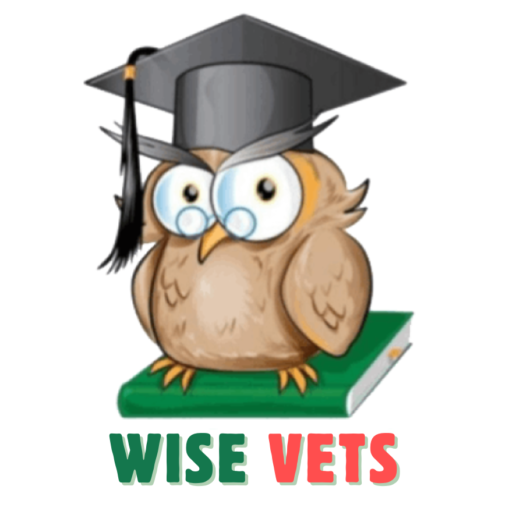The Veterinary Profession
Role of Veterinarians
Veterinarians are animal healthcare professionals who diagnose and treat injuries and illnesses in animals. They use medical tools and diagnostic equipment like x-ray machines, perform surgeries when necessary, and provide essential medical services for pets, similar to how physicians care for humans (Workable). Their role includes:
- Conducting physical examinations
- Administering vaccinations
- Prescribing medications
- Performing surgical procedures
- Offering advice on pet care and nutrition
Veterinarians play a crucial role in maintaining the health and well-being of animals, ensuring they live long and healthy lives.
Becoming a Veterinarian
Becoming a veterinarian is a challenging yet rewarding journey. Typically, it takes approximately eight years to become a licensed veterinarian, though this duration can vary. Here is a breakdown of the general timeline:
| Education Level | Duration | Description |
|---|---|---|
| Undergraduate Studies | 4 years | Bachelor’s degree in a related field |
| Veterinary School | 4 years | Doctor of Veterinary Medicine (DVM) degree |
Sources: Inspira Advantage, Ross University School of Veterinary Medicine
-
Undergraduate Studies: Aspiring veterinarians must first complete a four-year undergraduate degree, typically in a field related to animal studies or biological sciences. Courses may include biology, chemistry, physics, and animal science.
-
Veterinary School: After obtaining a bachelor’s degree, students must attend veterinary school. This usually takes an additional four years, culminating in a Doctor of Veterinary Medicine (DVM) degree. Some programs, like the year-round DVM degree program at Ross University School of Veterinary Medicine, allow students to complete their degree in as few as 3.25 years.
-
Licensing: To practice veterinary medicine, graduates must pass the North American Veterinary Licensing Examination (NAVLE) and meet state or province licensure requirements.
Due to the limited number of veterinary schools (32 in the U.S.), the admissions process is highly competitive. For more information on the journey to becoming a veterinarian, explore our articles on veterinary college and veterinary science.
Veterinary Specialties
Veterinary medicine offers a range of specialized areas that allow veterinarians to focus on specific types of animals, medical conditions, or practices. This section explores the diverse specialties within vet medicine and the additional training required to achieve expertise in these fields.
Specialized Areas
Veterinary medicine encompasses numerous specialties, each catering to different aspects of animal health. According to Inspira Advantage, there are 41 distinct specialties in the field. Some of the most common specialized areas include:
- Internal Medicine: Focuses on diagnosing and treating complex medical conditions in animals.
- Surgery: Involves performing various surgical procedures, from routine spaying and neutering to complex orthopedic surgeries.
- Dermatology: Specializes in treating skin conditions and allergies in animals.
- Cardiology: Deals with heart-related issues and diseases in pets.
- Oncology: Concentrates on the diagnosis and treatment of cancer in animals.
- Neurology: Focuses on disorders of the nervous system.
- Radiology: Utilizes imaging techniques such as X-rays, MRIs, and CT scans to diagnose conditions.
Additional Training
Pursuing a specialty in veterinary medicine requires additional training beyond the Doctor of Veterinary Medicine (DVM) degree. This encompasses completing a residency program, which provides advanced training in a specific area. The length of residency programs varies, but most are three years long (Ross University School of Veterinary Medicine).
Here is a typical timeline for becoming a veterinary specialist:
| Training Stage | Duration | Description |
|---|---|---|
| Undergraduate Studies | 4 years | Bachelor’s degree in a relevant field. |
| Veterinary School | 4 years | DVM degree. |
| Residency Program | 3 years | Specialized training in a chosen field. |
Additional training may also include passing certification exams and engaging in continuous professional development to stay current with advancements in veterinary science.
Veterinary doctors considering specializing can benefit from understanding the requirements and commitment involved. For more information on veterinary education pathways, visit our pages on veterinary college and veterinary science.
Exploring these specialties not only enhances a veterinarian’s expertise but also broadens the scope of services they can offer, ultimately improving animal care and treatment outcomes. For those interested in pursuing a veterinary specialty, it’s essential to be prepared for the rigorous academic and practical demands of the residency programs. Detailed information on the process can be found in our article on veterinary course.
Employment in Veterinary Medicine
Veterinary medicine is a dynamic and rewarding field, offering a variety of career opportunities and competitive salaries. Understanding the job outlook and salary comparison can provide valuable insights for those considering a career as a veterinarian.
Job Outlook
The demand for veterinarians is on the rise. According to the U.S. Bureau of Labor Statistics, the employment of veterinarians is projected to grow by 20% between 2022 and 2032. This growth rate is much faster than the average for all occupations, reflecting an increasing need for veterinary services. Approximately 5000 job openings per year are expected over the next decade (Inspira Advantage).
The growing pet ownership trend, advancements in veterinary medicine, and increased awareness of animal health are significant factors contributing to this positive job outlook. Aspiring veterinarians can explore various specialties within the field to enhance their career prospects. For more information on specialized areas and additional training, visit our section on veterinary specialties.
Salary Comparison
Veterinarians enjoy competitive salaries, although they vary based on factors such as location, experience, and specialization. As of recent data, the median pay for veterinarians is $103,260 per year (Inspira Advantage). This remuneration reflects the critical role veterinarians play in animal health and welfare.
To provide a clearer picture, here’s a comparison of median salaries for veterinarians and other related professions:
| Profession | Median Salary (Per Year) |
|---|---|
| Veterinarian | $103,260 |
| Physicians | $208,000+ |
| Veterinary Technologists | $36,260 |
| Animal Trainers | $31,520 |
This table underscores the significant earning potential for veterinarians compared to other animal-related professions. It also highlights the financial rewards that come with additional education and specialization within veterinary medicine. For those interested in pursuing a career in veterinary science, consider exploring programs offered by vet science colleges and the veterinary course options available.
By understanding the job outlook and salary potential, aspiring veterinarians can make informed decisions about their career path. Whether you’re drawn to clinical practice, research, or a specialized area, the field of veterinary medicine offers a promising and fulfilling career. For more detailed information on the roles and responsibilities of veterinarians, visit our section on the role of veterinarians.
Common Pet Diseases
Pets, like humans, can suffer from a variety of diseases that require prompt attention from a veterinary doctor. Recognizing the symptoms and understanding the importance of early detection are crucial for maintaining the health and well-being of cats and dogs.
Symptoms in Cats and Dogs
Common pet diseases can manifest in various ways, and symptoms may include:
- Pain
- Loss of appetite
- Lack of interest in drinking
- Abnormal walking or running
- Urinating and defecating in uncommon areas
- Abnormal physical signs such as sores on the skin
- Pacing, whining, growling
- Lying in an uncomfortable position
These symptoms should be addressed promptly to prevent further complications and ensure the pet’s health.
| Symptom | Possible Indication |
|---|---|
| Pain | Arthritis, injury, dental issues |
| Loss of Appetite | Gastrointestinal problems, infections |
| Lack of Interest in Drinking | Kidney disease, dehydration |
| Abnormal Walking/Running | Neurological issues, joint problems |
| Urinating/Defecating in Uncommon Areas | Urinary tract infection, behavioral issues |
| Sores on Skin | Allergies, skin infections |
Importance of Early Detection
Early detection of medical conditions in pets can prevent many issues from becoming severe. According to Carol McConnell, DVM, MBA, vice president and chief veterinary officer for Nationwide, proactive measures can significantly impact a pet’s health (dvm360).
It is recommended to bring cats or dogs for a yearly wellness care exam to catch diseases early on and treat them before they become serious. This proactive approach helps maintain the health of pets and ensures timely intervention.
For more information on maintaining your pet’s health, visit our articles on veterinary medicine and wellness exams. Additionally, always monitor any abnormal behavior or signs closely and consult with a veterinary doctor if needed.
By understanding the symptoms and the importance of early detection, veterinary professionals can better serve their patients and help ensure the longevity and health of pets.
Veterinary Care Services
Veterinary care services encompass a range of essential treatments and check-ups that help maintain the health and well-being of pets. Two primary services offered are wellness exams and immediate treatment.
Wellness Exams
Wellness exams are critical for the early detection and prevention of diseases in pets. It is recommended to bring cats or dogs for a yearly wellness care exam to catch diseases early on and treat them before they become serious (Tierrasanta Veterinary Hospital). These exams typically include:
- Physical Examination
- Vaccination Updates
- Parasite Control
- Dental Check-up
Regular wellness exams are a proactive approach to maintaining pet health. Scheduling an appointment with a veterinarian ensures that any abnormalities or early signs of illness are promptly addressed. For more information on veterinary education, visit our veterinary science page.
| Exam Component | Frequency |
|---|---|
| Physical Examination | Yearly |
| Vaccination Updates | As needed |
| Parasite Control | As needed |
| Dental Check-up | Yearly |
Immediate Treatment
Immediate treatment is crucial when pets exhibit signs of illness or distress. The veterinary team at Tierrasanta Veterinary Hospital treats pets based on their diagnosis, ensuring they receive the necessary care to regain their health (Tierrasanta Veterinary Hospital). Signs that indicate the need for immediate treatment include:
- Lack of interest in eating or drinking
- Pain while moving
- Abnormal behavior
- Visible injuries
Immediate treatment can include medication administration, wound care, and emergency surgery if needed. Monitoring your pet for these signs and seeking prompt veterinary care can significantly improve their chances of a full recovery. For further insights into veterinary education and courses, visit our pages on veterinary doctor course and veterinary college.
By staying informed about wellness exams and immediate treatment options, veterinary doctors can better serve their patients and ensure the long-term health of pets. For additional resources, check out our articles on vet medicine and animal doctor course.
Technological Advancements
Technological advancements have significantly transformed the field of veterinary medicine, allowing for more accurate diagnoses and innovative treatment methods. This section delves into the impact of these advancements on diagnostic processes and the rise of telemedicine and robotics.
Impact on Diagnosis
Precision Imaging and Molecular Diagnostics are two groundbreaking technologies revolutionizing veterinary medicine. These advancements make diagnoses quicker, more accurate, and ultimately life-saving. Precision Imaging tools such as digital radiography, ultrasonography, and CT scans help veterinarians see deep inside organs and tissues with unmatched clarity (Vetport).
| Imaging Tool | Use Case |
|---|---|
| Digital Radiography | Detailed imaging of bones and joints |
| Ultrasonography | Visualizing soft tissues and organs |
| CT Scans | Comprehensive internal imaging |
Molecular Diagnostics, using techniques like PCR (Polymerase Chain Reaction) and NGS (Next-Generation Sequencing), analyze DNA and RNA, pinpointing genetic defects and infectious diseases. This precision allows veterinarians to identify conditions that might not be detectable through traditional methods (Vetport).
Telemedicine and Robotics
Telemedicine in veterinary care allows pet owners to connect with veterinarians virtually through remote consultations and telehealth apps. This eliminates the need to travel long distances for consultations, making veterinary care more accessible. Telehealth apps like VETport enable monitoring of vital signs, noting symptoms, and sending photos or videos of pets to vets for recommendations. For more information on veterinary courses integrating telemedicine, visit our page on veterinary course.
Robotics and automation are also transforming veterinary medicine. Surgical robots make surgeries safer and more precise, reducing recovery times and improving outcomes. Robotic rehabilitation provides tailored physical therapy and workouts for pets, enhancing their recovery process (Vetport). For insights into how these technologies are being incorporated into vet science colleges, check out our article on vet science colleges.
These advancements are making veterinary care more efficient and effective, helping veterinarians provide the best possible care for their patients. Explore more on the future trends in veterinary medicine to stay updated on upcoming innovations.
Future Trends in Veterinary Medicine
Personalized Medicine
Personalized medicine is becoming a cornerstone in veterinary science. By tailoring medical treatments to individual patient needs through genetic testing and targeted therapies, veterinarians can achieve more effective treatments and better outcomes for their patients. This approach allows for a deeper understanding of each animal’s unique genetic makeup, leading to more precise and effective care. For further reading on the intricacies of personalized medicine, visit our section on veterinary medicine.
Key Benefits
- Tailored Treatments: Customizing therapies based on genetic profiles.
- Improved Outcomes: Higher success rates in treatments.
- Enhanced Monitoring: Better tracking of patient progress.
AI and Alternative Therapies
Artificial intelligence (AI) and alternative therapies are making significant strides in the realm of veterinary care. AI is utilized to analyze large datasets, identify patterns, and make informed decisions about patient care. This technology helps in developing new diagnostic tools and treatments, ultimately improving patient outcomes (LinkedIn).
On the other hand, alternative therapies such as acupuncture, chiropractic care, and herbal remedies are gaining traction. These holistic care options offer additional avenues for treating various conditions, although their efficacy remains a topic of debate.
| Technology | Benefits | Applications |
|---|---|---|
| AI | Data Analysis, Pattern Recognition | Diagnostics, Treatment Plans |
| Acupuncture | Pain Relief, Improved Mobility | Chronic Pain, Arthritis |
| Chiropractic Care | Spinal Alignment, Pain Management | Musculoskeletal Issues |
| Herbal Remedies | Natural Healing, Reduced Side Effects | Various Ailments |
For more on AI and its role in veterinary science, check out our article on veterinary course.
AI in Veterinary Medicine
- Data Analysis: AI can process vast amounts of data quickly.
- Pattern Recognition: Identifying trends that may not be obvious to the human eye.
- Decision Making: Assisting veterinarians in making more informed choices.
Alternative Therapies
- Acupuncture: Used for pain relief and improving mobility.
- Chiropractic Care: Focuses on spinal alignment and pain management.
- Herbal Remedies: Offers natural healing options with fewer side effects.
For more information on the future of veterinary science, visit our sections on veterinary science and veterinary doctor. These advancements are setting the stage for a new era in veterinary care, enhancing the ability to provide comprehensive and effective treatments for our animal companions.
Innovations in Veterinary Care
Wearable Technology
Wearable technology is transforming the field of veterinary medicine by providing real-time health monitoring and proactive care for animals. Devices such as smart collars and activity trackers are designed to monitor various health parameters, including heart rate, respiratory rate, and activity levels. These devices enable veterinarians to detect potential health issues early and provide timely interventions.
According to VETport, wearable technology and IoT applications in veterinary science are revolutionizing vet medicine by ensuring early detection of health risks and remote care for animals. This innovative approach not only improves the quality of care but also offers peace of mind to pet owners by keeping them informed about their pets’ health status.
| Device Type | Monitored Parameters | Benefits |
|---|---|---|
| Smart Collars | Heart Rate, Respiratory Rate | Early Detection, Real-time Monitoring |
| Activity Trackers | Activity Levels, Sleep Patterns | Health Insights, Behavior Tracking |
For more information on the latest advancements in veterinary technology, explore our section on technological advancements in veterinary care.
One Health Approach
The One Health approach in veterinary medicine emphasizes the interconnectedness of human, animal, and environmental health. This collaborative effort involves the integration of veterinary, medical, and environmental sciences to improve the overall well-being of both people and animals.
The One Health approach recognizes that the health of humans and animals is closely linked, and that addressing health issues in one domain can have positive impacts on the other. This holistic perspective is particularly important in the context of zoonotic diseases, which can be transmitted between animals and humans. By fostering collaboration and knowledge sharing among different health professionals, the One Health approach aims to enhance disease prevention, control, and treatment.
As noted by LinkedIn, the One Health approach involves a collaborative effort between human and animal health professionals to improve the health and well-being of both people and animals. This integrated approach is essential for addressing global health challenges and ensuring sustainable health outcomes.
For additional insights on how to pursue a career in veterinary medicine and contribute to the One Health initiative, check out our resources on veterinary courses and veterinary doctor courses.
By embracing these innovations, veterinary professionals can enhance the quality of care provided to animals and contribute to the overall health and well-being of our communities.






